Renault Captur vs Ford Puma – Differences & prices compared
Compare performance, boot space, consumption and price in one view.
Find out now: which car is the better choice for you – Renault Captur or Ford Puma?
The Renault Captur (SUV) comes with a Petrol MHEV, Petrol or Full Hybrid engine and Manuel or Automatic transmission. In comparison, the Ford Puma (SUV) features a Electric or Petrol MHEV engine with Automatic or Manuel transmission.
When it comes to boot capacity, the Renault Captur offers 422 L, while the Ford Puma provides 523 L – depending on how much space you need. If you’re looking for more power, decide whether the 158 HP of the Renault Captur or the 168 HP of the Ford Puma suits your needs better.
In terms of consumption, the values are 4.50 L per 100 km for the Renault Captur, and 13.10 kWh5.40 L for the Ford Puma.
Price-wise, the Renault Captur starts at 20100 £, while the Ford Puma is available from 24800 £. Compare all the details and find out which model fits your lifestyle best!
In the subcompact SUV segment, the Ford Puma and Renault Captur both bring distinct personalities to the driving experience. The Ford Puma stands out with its sporty dynamics and crisp handling, appealing to those who prioritize an engaging drive. In contrast, the Renault Captur offers a more refined ride with its focus on comfort and customization, making it a strong choice for those who value versatility and style.
Renault Captur
The Renault Captur is a compact SUV that combines stylish design with practical functionality, making it a popular choice for urban drivers. Its interior offers a versatile and comfortable space, featuring high-quality materials and modern technology. On the road, the Captur delivers a smooth and efficient driving experience, perfect for both city commutes and weekend adventures.
details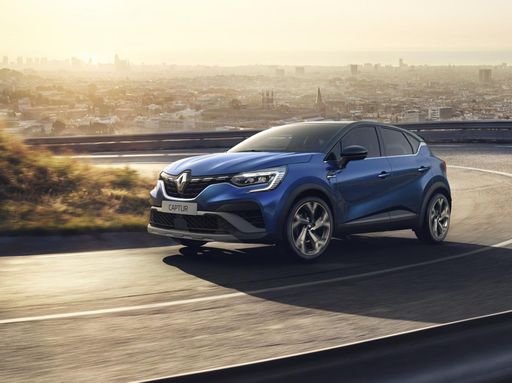 @ renault-presse.de
@ renault-presse.de
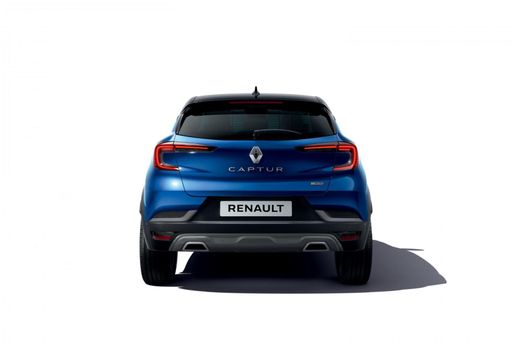 @ renault-presse.de
@ renault-presse.de
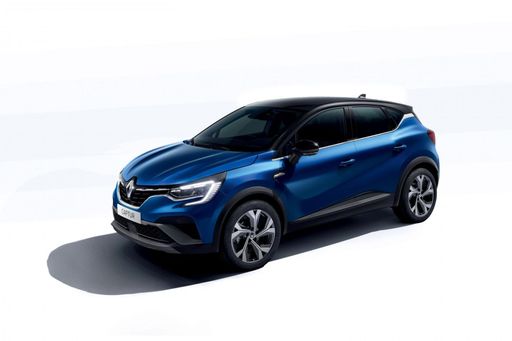 @ renault-presse.de
@ renault-presse.de
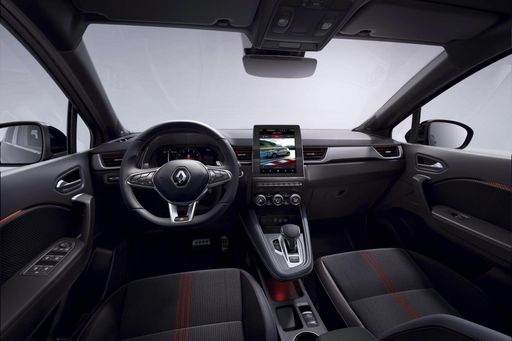 @ renault-presse.de
@ renault-presse.de
Ford Puma
The Ford Puma presents itself as a stylish compact SUV with a distinctive design that combines practicality with a dynamic driving experience. Its sleek lines and sporty aesthetics make it stand out on the road, while the interior offers a comfortable and tech-savvy environment. With an emphasis on efficiency and a smooth drive, the Ford Puma is well-suited for both urban commutes and countryside adventures.
details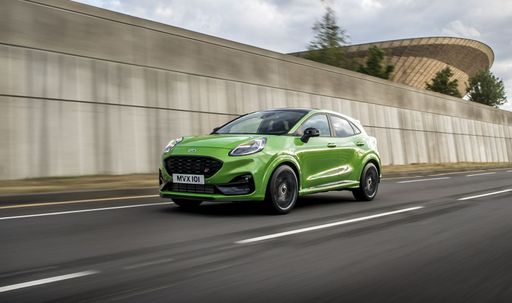 @ puma.fordpresskits.com
@ puma.fordpresskits.com
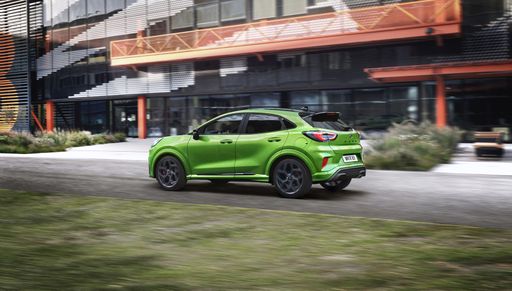 @ puma.fordpresskits.com
@ puma.fordpresskits.com
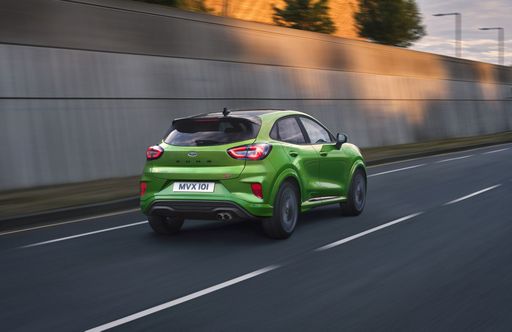 @ puma.fordpresskits.com
@ puma.fordpresskits.com
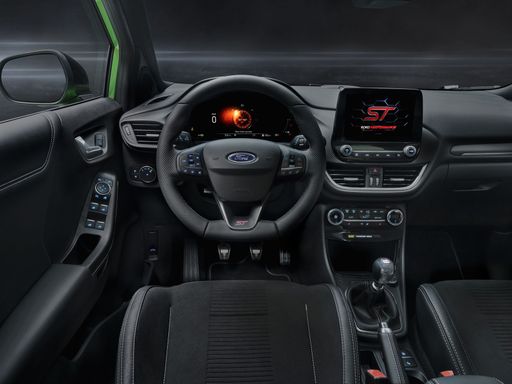 @ puma.fordpresskits.com
@ puma.fordpresskits.com
The Battle of the Urban SUVs: Ford Puma vs. Renault Captur
In the bustling world of compact SUVs, two names frequently rise above the noise: the 2024 Ford Puma and the Renault Captur. Both vehicles offer an enticing mix of style, innovation, and performance, destined to capture the hearts of city drivers and those embarking on adventurous getaways alike.
Design and Dimensions
The Ford Puma and Renault Captur both sport a modern SUV look, but they have distinct identities. The Puma measures between 4186 mm and 4226 mm in length, 1805 mm in width, and stands at 1550 mm to 1555 mm tall, making it a compact yet assertive presence on the road. With a trunk capacity ranging from 456 to 523 liters, the Puma offers ample space for both everyday items and urge-to-wander luggage.
The Captur, slightly larger at 4239 mm in length, 1797 mm in width, and 1575 mm in height, makes a robust statement of sophistication. Despite a modestly smaller trunk volume of 326 to 422 liters, the Captur's smart design makes excellent use of interior space, ensuring comfort and practicality.
Engine Options and Performance
Under the hood, both models lay claim to an impressive array of powertrains. The Ford Puma offers a versatile lineup including a Petrol MHEV and a full Electric variant, propelling it with power outputs ranging from 125 to 168 HP. Its acceleration can be as swift as 7.4 seconds from 0 to 100 km/h.
The Renault Captur contends with a variety of engines, from Full Hybrid to LPG and Petrol MHEV, boasting powers between 91 to 158 HP. It can accelerate from 0 to 100 km/h in as little as 8.5 seconds, rivaling the Puma in urban agility.
Fuel Efficiency and Environmental Impact
When it comes to consumption and emissions, the Puma and Captur both make impressive cases for the eco-conscious driver. The Puma boasts a fuel consumption range from 5.4 to 6 L/100 km for its petrol variants and 13.1 to 13.7 kWh/100 km for electric, delivering a significant breadth in efficient driving.
The Captur competes with a fuel consumption scale of 4.7 to 7.8 L/100 km, and a lower CO2 output, which aligns with the varying environmental standards in its class. For drivers prioritizing green credentials, both vehicles offer competitive CO2 efficiency, with the Puma ranging from Class A to E and the Captur from Class C to D.
Transmission and Driving Dynamics
Driving pleasure is enriched by the varied transmission offerings of both SUVs. The Ford Puma's array includes a Manual Gearbox, Dual-Clutch Automatic, and a Reduction Gearbox, paired with its front-wheel-drive system for a driving experience tailored to any urban challenge.
The Renault Captur also offers a diversity of gearboxes, including Automatic and Manual Gearbox options, refining its traditional front-wheel-drive dynamics with smooth and responsive control.
Innovations and Tech Features
Both the Ford Puma and Renault Captur reflect cutting-edge innovation. Packed with modern technology, they ensure their drivers are met with convenience, safety, and connectivity. From advanced infotainment systems to driver-assisting safety features, Cadillac-esque comfort is no longer exclusive to larger vehicles.
Whether you're navigating the daily commute or exploring further afield, the Ford Puma and Renault Captur stand ready to redefine your driving experience, exhibiting the prowess only finely crafted SUVs can deliver.

|

|
|
|
|
Costs and Consumption |
|
|---|---|
|
Price
20100 - 28300 £
|
Price
24800 - 36300 £
|
|
Consumption L/100km
4.5 - 6 L
|
Consumption L/100km
5.4 - 5.9 L
|
|
Consumption kWh/100km
-
|
Consumption kWh/100km
13.1 - 13.9 kWh
|
|
Electric Range
-
|
Electric Range
361 - 376 km
|
|
Battery Capacity
-
|
Battery Capacity
43 kWh
|
|
co2
102 - 135 g/km
|
co2
0 - 135 g/km
|
|
Fuel tank capacity
48 L
|
Fuel tank capacity
42 L
|
Dimensions and Body |
|
|---|---|
|
Body Type
SUV
|
Body Type
SUV
|
|
Seats
5
|
Seats
5
|
|
Doors
5
|
Doors
5
|
|
Curb weight
1293 - 1514 kg
|
Curb weight
1316 - 1563 kg
|
|
Trunk capacity
326 - 422 L
|
Trunk capacity
456 - 523 L
|
|
Length
4239 mm
|
Length
4186 - 4226 mm
|
|
Width
1797 mm
|
Width
1805 mm
|
|
Height
1575 mm
|
Height
1550 - 1555 mm
|
|
Payload
376 - 457 kg
|
Payload
367 - 469 kg
|
Engine and Performance |
|
|---|---|
|
Engine Type
Petrol MHEV, Petrol, Full Hybrid
|
Engine Type
Electric, Petrol MHEV
|
|
Transmission
Manuel, Automatic
|
Transmission
Automatic, Manuel
|
|
Transmission Detail
Manual Gearbox, Dual-Clutch Automatic, Automatic Gearbox
|
Transmission Detail
Reduction Gearbox, Manual Gearbox, Dual-Clutch Automatic
|
|
Drive Type
Front-Wheel Drive
|
Drive Type
Front-Wheel Drive
|
|
Power HP
91 - 158 HP
|
Power HP
125 - 168 HP
|
|
Acceleration 0-100km/h
8.5 - 14.3 s
|
Acceleration 0-100km/h
7.4 - 9.8 s
|
|
Max Speed
168 - 180 km/h
|
Max Speed
160 - 210 km/h
|
|
Torque
160 - 270 Nm
|
Torque
170 - 290 Nm
|
|
Number of Cylinders
3 - 4
|
Number of Cylinders
3
|
|
Power kW
67 - 116 kW
|
Power kW
92 - 124 kW
|
|
Engine capacity
999 - 1789 cm3
|
Engine capacity
999 cm3
|
General |
|
|---|---|
|
Model Year
2024 - 2025
|
Model Year
2025
|
|
CO2 Efficiency Class
D, C
|
CO2 Efficiency Class
A, D
|
|
Brand
Renault
|
Brand
Ford
|
Renault Captur
The Renault Captur: A Modern Fusion of Style and Efficiency
The Renault Captur has carved a unique niche for itself in the compact SUV segment, combining eye-catching design with advanced technology. As we delve into its technical specifications and innovative features, it's clear why this model continues to captivate automotive enthusiasts and everyday drivers alike.
Under the Bonnet: Power and Performance
The Renault Captur offers a diverse range of powertrains, catering to different driving preferences and needs. Whether you opt for a full hybrid or a mild-hybrid petrol engine, the Captur provides an impressive blend of power and efficiency. The power output ranges from 91 to 158 PS, ensuring a versatile drive whether you're navigating urban streets or hitting the open road.
With a fuel consumption range of 4.7 to 7.8 L/100km, Renault has engineered the Captur with an environmental focus, presenting one of the more economical offerings in its class. The CO2 emissions range from 106 to 139 g/km, adhering to modern demands for reduced environmental impact without compromising on performance.
Technological Innovation: E-Tech Hybrid System
An exciting feature of the Captur is its E-Tech hybrid system, a testament to Renault's commitment to innovation. This system intelligently combines a petrol engine with an electric motor to optimise energy usage, offering both power and efficiency seamlessly. This technology is particularly beneficial in urban settings where frequent stopping and starting can traditionally increase fuel consumption and emissions.
Driving Dynamics and Comfort
The Renault Captur is built with front-wheel drive and offers both manual and automatic transmission options, including cutting-edge dual-clutch systems for smooth gear changes. Offering a maximum torque of 160 to 270 Nm ensures a responsive drive across various terrains. Coupled with its agile handling and a maximum speed range of 168 to 180 km/h, the Captur is as adept on a motorway as it is in city environments.
Comfort has not been overlooked; with five seats and spacious dimensions of 4239 mm in length, 1797 mm in width, and 1575 mm in height, the Captur provides ample space for passengers and luggage alike. The boot space ranges from 326 to 422 litres, accommodating anything from daily grocery shopping to holiday luggage with ease.
Manufacturing Excellence: Safety and Quality Features
Safety and quality are core components of the Captur's design. It features advanced safety technologies and driver-assistance systems, ensuring peace of mind on every journey. The model's CO2 efficiency classes range between C and D, aligning with current environmental standards while still prioritising driver and passenger safety.
Conclusion: A Compelling Choice in Its Class
With a price range between €22,950 to €32,750, the Renault Captur represents a compelling balance of affordability and feature-rich ownership. For those seeking a vehicle that harmonises cutting-edge technology, ecological mindfulness, and dynamic driving experiences, the Captur stands out as a particularly attractive choice in the competitive SUV market.
In summary, the Renault Captur's combination of modern styling, advanced hybrid technology, and practical features places it firmly as a leading contender for anyone considering a contemporary SUV purchase.
Ford Puma
A Glimpse into the Ford Puma: Fusing Style with Innovation
The Ford Puma stands as a testament to modern engineering fused with style. This compact SUV is not just about aesthetics but brings to the table an array of technical innovations, topped with the reliability and performance Ford is known for. Let's delve into the technical specifics and innovative features that make the Ford Puma a stellar choice for any car enthusiast.
Powertrains and Performance
The Ford Puma is offered with a range of powertrains designed to deliver optimal performance whilst minimising fuel consumption. At the heart of this compact SUV is the 1.0 EcoBoost Hybrid engine, available in both 125 PS and 155 PS variants. This engine is a marvel of engineering, optimised to deliver power efficiently with a remarkable fuel consumption ranging from 5.4 to 5.7 L/100km for manual versions, and slightly higher for the automated variants.
The top-end 1.5 EcoBoost ST variant takes performance up a notch, providing a robust 200 PS that propels the Puma from 0 to 100 km/h in just 6.7 seconds. This variant is perfect for those who prioritise performance and exhilaration in their driving experience.
Mild-Hybrid Technology
The Puma's mild-hybrid technology plays a significant role in enhancing fuel efficiency and reducing emissions. By utilising a belt-driven integrated starter/generator, the Puma recovers energy usually lost during braking, storing it in a 48-volt lithium-ion battery. This stored energy is then used to assist the engine, providing a boost during acceleration and smoothing out the stop-start technology, ultimately leading to enhanced fuel efficiency.
Design and Comfort
The Ford Puma does not compromise on style and comfort with its ergonomic and stylish design. The SUV is available in multiple trims including the ST-Line, Titanium, and the luxurious Vignale editions, each offering unique aesthetic and technological enhancements. These trim levels provide varied offerings in terms of both exterior styling and interior comfort, ensuring there's a Puma that meets every personal preference.
Inside, the Puma offers a driver-focused cockpit with advanced technological integrations such as the SYNC 3 infotainment system, providing seamless connectivity and intuitive control of the vehicle's numerous technological features.
Safety and Technology
Safety remains paramount, and the Ford Puma is equipped with the latest security and technology features. It boasts the Ford Co-Pilot360 suite which includes adaptive cruise control, pre-collision assist with autonomous emergency braking, and lane-keeping assist, enabling a safer driving experience on both city roads and highways.
Versatility and Practicality
Beyond performance and safety, the Ford Puma shines in its versatility. With a boot capacity of 456 litres, it offers ample space for all sorts of adventures, whether you're heading on a family trip or loading sports equipment. Its innovative MegaBox is an extra storage solution, providing additional space below the boot floor.
The Puma's agile handling, paired with its compact dimensions—spanning a length of 4186 to 4266 mm and a width of 1805 mm—makes it an ideal choice for urban commuting and beyond.
Conclusion
In conclusion, the Ford Puma beautifully blends practical features with cutting-edge technology, offering a package that appeals to both the tech-savvy driver and those seeking comfort and reliability. Its range of innovative features, powerful yet efficient engine options, and a design that is both functional and stylish make it a frontrunner in the compact SUV market.
Whether you're drawn by the efficient mild-hybrid engines or the robust performance of the ST variant, the Ford Puma represents a modern driving experience where innovation meets everyday usability.
Is the Renault Captur offered with different drivetrains?
The Renault Captur is offered with Front-Wheel Drive.
The prices and data displayed are estimates based on German list prices and may vary by country. This information is not legally binding.
